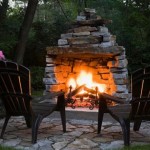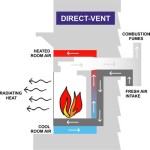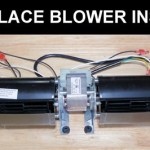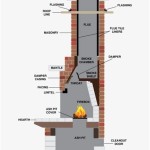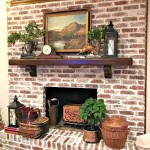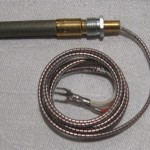Ventless Propane Logs for Fireplace: A Comprehensive Guide
Ventless propane logs offer a convenient and aesthetically pleasing alternative to traditional wood-burning fireplaces. They utilize propane gas as fuel and do not require a chimney or flue, making them a versatile option for homes without existing fireplace infrastructure or for those seeking a simplified fireplace experience. This article serves as a comprehensive guide to ventless propane logs, exploring their functionality, benefits, considerations, and installation requirements.
Unlike wood-burning fireplaces that produce smoke and require venting, ventless propane logs operate by burning propane gas cleanly and efficiently. The combustion process is designed to be nearly complete, minimizing the production of harmful byproducts such as carbon monoxide. These logs are typically crafted from ceramic or refractory materials to mimic the appearance of real wood logs, providing the ambiance of a traditional fire without the associated mess and safety concerns.
The absence of a chimney offers significant advantages. Installation is simplified and less costly, as it eliminates the need for extensive ductwork or structural modifications. Ventless propane logs can be installed in a wider range of locations within a home, offering greater flexibility in design and placement. Furthermore, ventless systems tend to be more energy-efficient than vented fireplaces, as the heat generated is retained within the room rather than escaping through a chimney.
However, the "ventless" nature of these systems necessitates careful attention to safety and regulatory compliance. It is crucial to select a unit that is certified by a recognized testing agency, such as the Canadian Standards Association (CSA) or the American National Standards Institute (ANSI). These certifications ensure that the logs meet stringent safety standards regarding gas combustion efficiency, oxygen depletion, and carbon monoxide emissions. Local building codes and regulations should also be consulted to ensure compliance with ventless appliance restrictions and installation guidelines.
Understanding the Functionality of Ventless Propane Logs
Ventless propane logs operate on a relatively straightforward principle. Propane gas is supplied to a burner concealed beneath the ceramic or refractory logs. When ignited, the gas burns, producing flames that dance around and between the faux logs. The logs themselves radiate heat into the surrounding room, providing a comforting warmth and visual appeal.
The key to the safe operation of ventless propane logs lies in the design of the burner and the control system. The burner is engineered to ensure complete combustion of the propane gas, minimizing the production of carbon monoxide. Oxygen Depletion Sensors (ODS) are integral to the safety system. These sensors continuously monitor the oxygen levels in the room. If the oxygen level drops below a predetermined threshold, indicating a potential buildup of carbon monoxide, the ODS automatically shuts off the gas supply to the logs, preventing further combustion and mitigating the risk of carbon monoxide poisoning.
Most ventless propane log sets come equipped with a control system that allows for adjusting the flame height and heat output. These controls can range from simple manual valves to sophisticated electronic systems with remote control capabilities. Some models also incorporate thermostatic controls, which automatically adjust the flame height to maintain a desired room temperature.
The efficiency of ventless propane logs is heavily dependent on proper installation and maintenance. The logs must be positioned correctly within the firebox to ensure proper airflow and combustion. The burner and gas lines should be inspected regularly for any signs of leaks or damage. Professional servicing by a qualified technician is recommended at least once a year to ensure optimal performance and safety.
Benefits and Advantages of Choosing Ventless Propane Logs
Choosing ventless propane logs for a fireplace offers a multitude of benefits over traditional wood-burning or vented gas fireplaces. One of the most significant advantages is the ease of installation. Since no chimney or flue is required, the installation process is simplified, reducing both the time and cost involved. This makes ventless propane logs a particularly attractive option for homes without existing fireplace infrastructure or for homeowners seeking a relatively quick and hassle-free fireplace upgrade.
Another key benefit is energy efficiency. Ventless systems retain a greater percentage of the heat generated within the room, as there is no chimney to vent the warm air outside. This can translate to significant energy savings over time, particularly when compared to vented fireplaces that lose a substantial amount of heat through the chimney. Ventless propane logs can effectively heat a room or zone within a house, reducing the reliance on central heating systems and lowering overall energy consumption.
The convenience factor is also a major selling point for ventless propane logs. Unlike wood-burning fireplaces, there is no need to chop, stack, or store wood. There is also no ash to clean up after each use. Simply turn on the gas supply and ignite the logs for instant warmth and ambiance. The ease of operation makes ventless propane logs an ideal choice for homeowners who want the look and feel of a fireplace without the hassle and mess associated with traditional wood-burning systems.
Furthermore, ventless propane logs offer greater design flexibility. They can be installed in a wider range of locations within a home, as they do not require access to a chimney or flue. This allows homeowners to create a fireplace feature in rooms that might otherwise be unsuitable for traditional fireplaces. Ventless systems can also be incorporated into existing fireplace openings, providing a cost-effective way to convert a wood-burning fireplace into a more convenient and efficient gas-burning system.
Important Considerations and Safety Precautions
While ventless propane logs offer numerous advantages, it is crucial to understand the associated considerations and safety precautions. The most important factor is ensuring adequate ventilation within the room where the logs are installed. Although ventless systems are designed to burn propane gas cleanly, they still consume oxygen and produce small amounts of carbon monoxide. Proper ventilation helps to prevent the buildup of these byproducts and maintains a safe indoor air quality.
It is recommended to open a window or door slightly when operating ventless propane logs, particularly for extended periods. This allows for fresh air to circulate and replenish the oxygen supply. The size of the room should also be taken into account when selecting a ventless propane log set. Larger rooms require a higher BTU output to effectively heat the space, while smaller rooms may be adequately heated by a lower BTU unit. Oversizing the logs for a small room can lead to excessive heat and potential safety concerns.
Regular maintenance is essential for the safe and efficient operation of ventless propane logs. The burner and gas lines should be inspected periodically for any signs of leaks or damage. The Oxygen Depletion Sensor (ODS) should be tested regularly to ensure that it is functioning properly. Professional servicing by a qualified technician is recommended at least once a year to thoroughly inspect the system, clean the burner, and verify the ODS operation.
Carbon monoxide detectors should be installed in the room where the ventless propane logs are located and in adjacent rooms. These detectors provide an early warning system in the event of a carbon monoxide leak. Batteries should be replaced regularly, and the detectors should be tested periodically to ensure that they are functioning correctly. It is also important to educate all occupants of the home about the potential hazards of carbon monoxide poisoning and the importance of proper ventilation when operating ventless propane logs.
Finally, it is crucial to select a ventless propane log set that is certified by a recognized testing agency, such as the Canadian Standards Association (CSA) or the American National Standards Institute (ANSI). These certifications ensure that the logs meet stringent safety standards regarding gas combustion efficiency, oxygen depletion, and carbon monoxide emissions. Local building codes and regulations should also be consulted to ensure compliance with ventless appliance restrictions and installation guidelines. Failure to comply with these regulations can result in fines and potential safety hazards.

Napoleon Gvfl30 Ventless Gas Log Set 30 Inch

Duluth Forge Ventless Dual Fuel Gas Log Set 18 In Stacked Red Oak Remote Control 210048 The Home Depot

Empire Flint Hill Ventless Gas Log Set Woodland Direct

Duluth Forge 18 In 30000 Btu Dual Burner Vent Free Gas Fireplace Logs With Thermostat And Remote The Department At Com

Builders Series 30 Inch Vent Free Gas Log Set Remote Ready

Duluth Forge Ventless Natural Gas Log Set 22 In Winter Oak 32 000 Buyersdepot Com

Duluth Forge 22 In W Vent Free Propane Gas Fireplace Log Set Winter Oak 32 000 Btu Thermostat Control Dls L22t The Home Depot

Superior Ltfrs Vent Free Concrete Rugged Stack Gas Log Set
:max_bytes(150000):strip_icc()/ventless-gas-fireplaces-4160746-hero-f9d4bdcd9bd446eb84406de306f790ba.jpg?strip=all)
How To Pick Out A Ventless Gas Fireplace

Ventless Gas Log Set Guide Fireplaces Direct Learning Center
Related Posts


